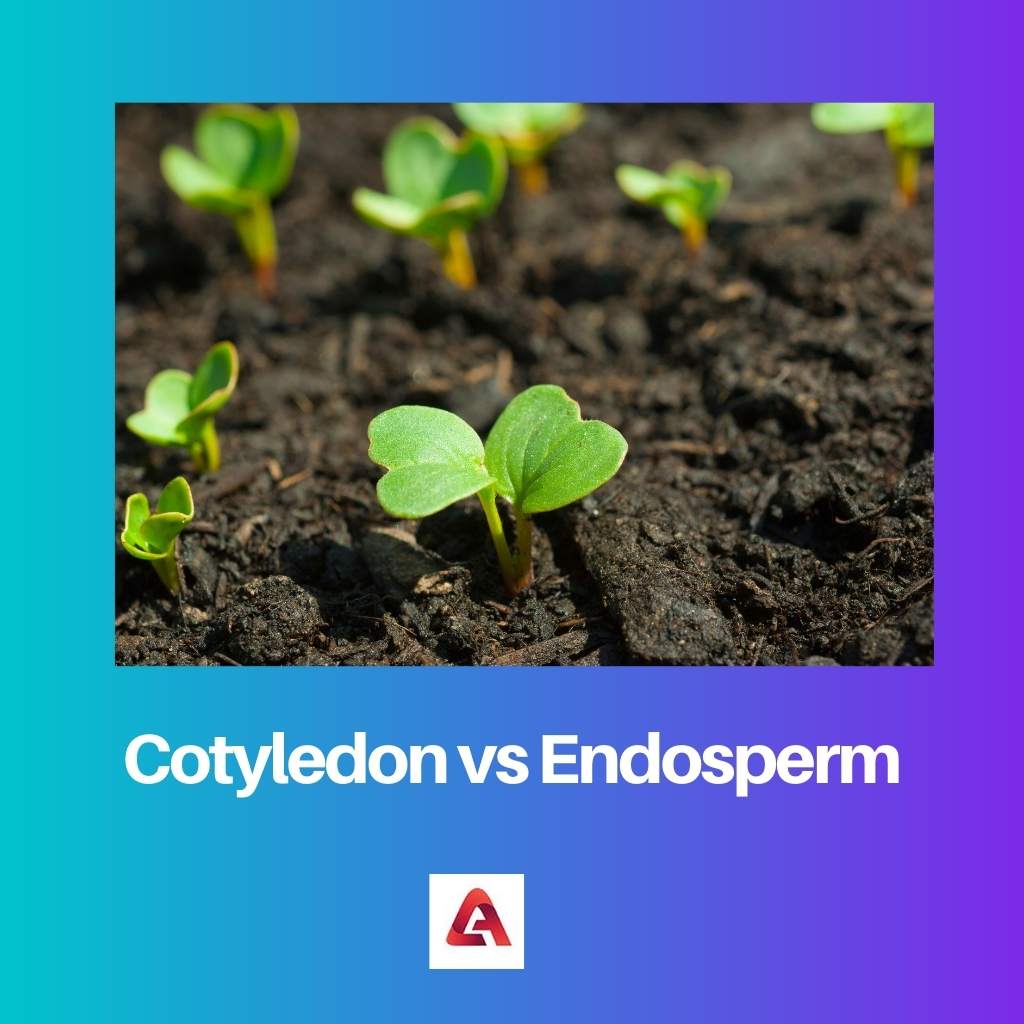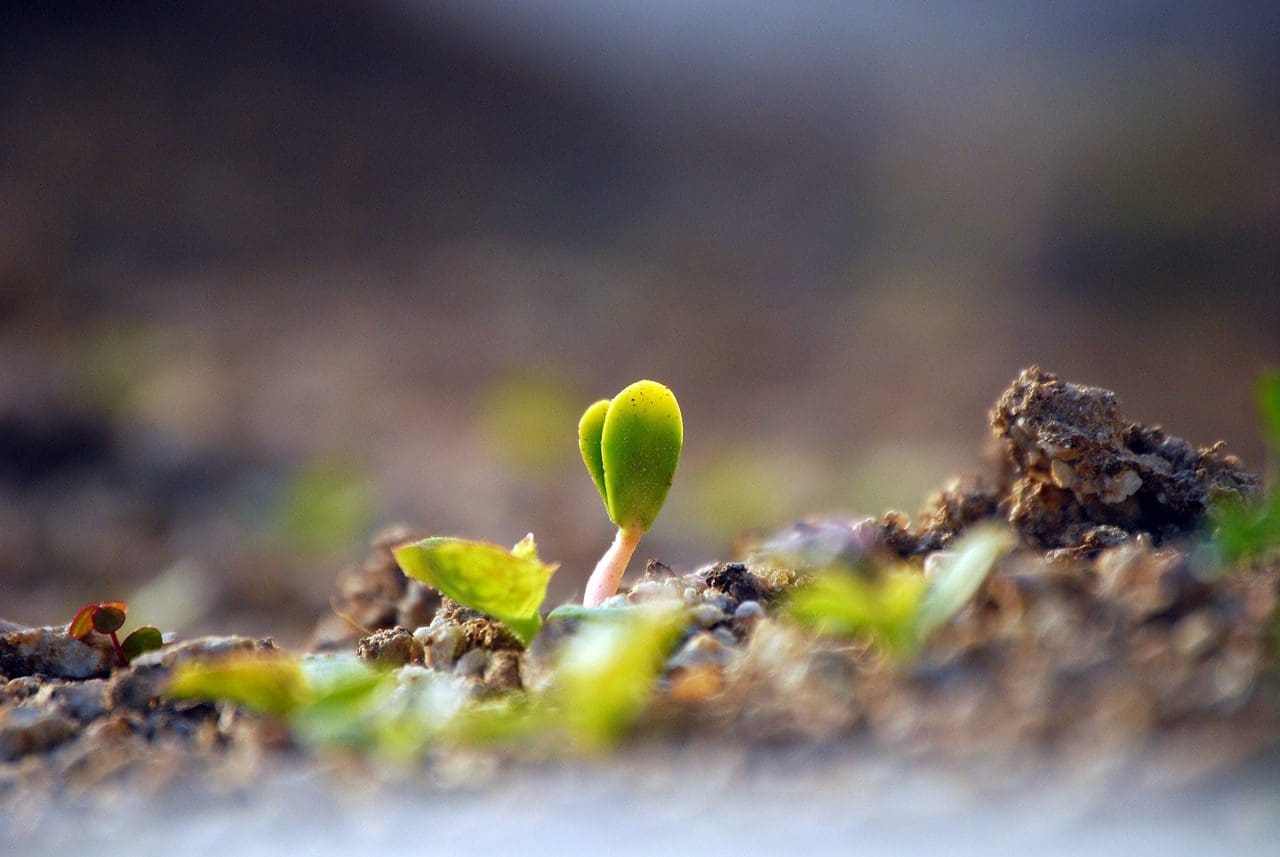Plants assume a vital part of our lives. We may not think along these lines, in this, undoubtedly, an occupied way of life we presently live in.
On the off chance that you see government officials making sounds, one of the demonstrations they do to advance their name is tree-planting ventures, and this is because the need to get the votes of ecological gatherings is high.
Key Takeaways
- Cotyledon is the embryonic leaf of a seed, while the endosperm is the tissue that provides nutrients to the developing embryo.
- Cotyledon is found in dicotyledonous plants, while the endosperm is found in monocotyledonous plants.
- Cotyledon becomes the plant’s first leaves after germination, while the embryo absorbs endosperm during germination.
Cotyledon vs. Endosperm
Cotyledon is the embryonic leaf of the seed developing into first leaves of the embryonic plant. Endosperm is the nutritive tissue, that stores nutrients needed by embryo development during seedling. Former is due to double fertilisation, while latter due to triple fusion during double fertilisation.

Cotyledon is a seed leaf found in lacking living beings of sprouting plants. Cotyledon found in monocots is critical in food maintenance, while, in dicots, cotyledon’s abilities are in both digestion and the limit of food.
The endosperm is the most notable limit tissue in the seed of angiosperms, which starts from the relationship of a male center and the polar centers of the early creature sac.
Comparison Table
| Parameters of Comparison | Cotyledon | Endosperm |
|---|---|---|
| Roots | It comprises sinewy roots with numerous branches. | It comprises taproots with long thick roots. |
| Bloom Parts | It is available in products of three. | It is available in products of four or five. |
| Seedlings | A cotyledon provides for the creation of a developing organism. | An endosperm gives sustenance to the young seedling. |
| Photosynthetic | Cotyledons are photosynthetic. | The endosperm isn’t photosynthetic. |
| Supplement | The young seedling gets its nourishment from the cotyledons. | The creating incipient organism gets its supplements from the endosperm. |
What is Cotyledon?
Cotyledon is a seed leaf found in undeveloped organisms of blooming plants. Cotyledon found in monocots is significant in food retention, while, in dicots, cotyledon’s capacities are in both the assimilation and accommodation of food.
Incipient organisms that need cotyledons are alluded to as acotyledons. Moreover, there are dicots with only one cotyledon, known as monocular or monocotyledonous dicots.
Cotyledons fluctuate broadly in size, shape, and capacity. For instance, thick and plump cotyledons may fill in as a supplement source, while meager, leaf-like cotyledons may fill in as photosynthetic organs during seed germination.

What is Endosperm?
The endosperm is the most well-known capacity tissue in the seed of angiosperms, which begins from the association of a male core and the polar cores of the developing sac.
Accordingly, in most developed incipient organisms, endosperm gives off an impression of being missing. Generally, it endures in developing seeds of monocots, while it is missing in developing sources of dicots.
Main Differences Between Cotyledon and Endosperm
- In dicots, the endosperm is processed totally before the seed sprouts, whereas cotyledon stays until the seedling is equipped for photosynthesis.
- An endosperm sustains the young seedling, whereas a cotyledon provides for the creation incipient organism.
The concept of cotyledon and endosperm is truly intriguing. It’s a world of wonder.
Absolutely, nature’s complexity is a marvel to behold.
The comparisons between cotyledon and endosperm are truly enlightening. Nature’s brilliance never ceases to impress.
Nature’s mysteries are truly captivating.
Indeed, the more we explore, the more we’re dazzled by the intricacies of nature.
The detailed comparison between cotyledon and endosperm is enlightening. It’s amazing to see how plants have evolved to have such intricate structures and processes.
Nature’s complexity never ceases to fascinate.
Indeed, the more we delve into the world of plants, the more we realize how much we have yet to uncover.
The world of plant biology is truly awe-inspiring. The functions of cotyledon and endosperm are just a glimpse of the wonders of nature.
Nature’s intricacies never cease to inspire.
Absolutely, the more we delve into the natural world, the more we’re left in awe.
The topic of cotyledon and endosperm is incredibly interesting. There’s so much more to learn about the world of plants.
Nature always has a way of surprising us, doesn’t it?
Absolutely, it’s a fascinating area of study.
The intricate details of plant biology never fail to amaze. The topic of cotyledon and endosperm is no exception.
Indeed, the more we learn, the more we’re astounded by the wonders of nature.
I find it fascinating how the cotyledon and endosperm play essential roles in the development of plants. Such a rich and intricate process.
Very true, the more we learn, the more we realize how nature works in amazing ways.
Absolutely, the complexity of plant biology never ceases to amaze.
It’s amazing how detailed and complex the topic of plants and seeds is. There’s so much to learn about these organisms and their different parts and functions.
Absolutely, every detail makes you appreciate the complexity of nature even more.
Learning about the different functions of cotyledon and endosperm is truly enlightening. Nature’s complexity is awe-inspiring.
Absolutely, the more we learn, the more we’re humbled by the beauty of nature.
Nature continues to show us its endless mysteries.
I never knew that the different types of plants had such distinct and important processes for seed development. This is fascinating!
Indeed, nature’s intricacies are truly remarkable.